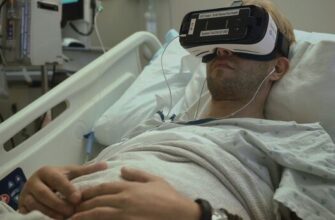In the ever-evolving landscape of genetic research, a recent development from Japan offers a glimpse into a future where complex chromosomal conditions might be addressed with unprecedented precision. It`s a tale of molecular scissors and meticulous science, promising a paradigm shift in genetic therapy.
The Genetic Conundrum of Trisomy 21
Down syndrome, or Trisomy 21, is a genetic condition arising from the presence of an extra full or partial copy of chromosome 21. This seemingly small genetic deviation leads to a spectrum of developmental and physiological differences, impacting millions globally. For decades, the focus of medical intervention has primarily been on managing symptoms and supporting developmental milestones. However, the dream of addressing the root cause – the extra chromosome itself – has remained a distant, albeit persistent, scientific aspiration.
Mie University`s Breakthrough: A Surgical Strike at the Chromosome
Enter the researchers from Mie University in Japan, who have unveiled a method that brings this aspiration a significant step closer to reality. Published in the esteemed journal PNAS Nexus, their work describes an innovative application of the renowned CRISPR/Cas9 gene-editing technology. Unlike broad-stroke genetic modifications, this approach is surgically precise.
The core of their innovation lies in developing unique “guide RNAs” for the CRISPR/Cas9 system. These guides act like microscopic GPS navigators, directing the Cas9 enzyme to specifically target and “cut out” only the additional copy of chromosome 21. This technique, known as allele-specific editing, ensures that the two normal copies of the chromosome remain untouched, a critical distinction for maintaining healthy cellular function.
Restoring Balance: The Cellular Impact
The success of this precision editing was not merely about removing a chromosome; it was about observing the profound cellular changes that followed. After the intervention, the gene expression within the treated cells remarkably normalized. Genes associated with the development of the nervous system, previously subdued by the chromosomal imbalance, showed increased activity. Conversely, metabolic activities that were dysregulated began to subside, pointing towards a restoration of cellular equilibrium.
This molecular restoration offers tantalizing hints at how such a therapy might, in the distant future, mitigate some of the developmental challenges associated with Trisomy 21.
From Lab Bench to Bedside: A Long Road Ahead
The method demonstrated impressive efficacy in controlled laboratory environments, specifically in lab-grown human cells and, crucially, in skin cell samples taken directly from individuals with Down syndrome. This latter point is particularly significant, as it shows the technique`s potential applicability to human tissues.
However, as with all groundbreaking scientific discoveries, a healthy dose of realism is paramount. The researchers themselves are quick to emphasize that this technology is currently “far from clinical application.” The journey from a successful laboratory experiment to a safe, effective, and widely available clinical therapy is a marathon, not a sprint. It demands:
- Meticulous fine-tuning: Ensuring absolute specificity and avoiding any unintended modifications to healthy cells.
- Extensive safety testing: Rigorous evaluation to rule out any adverse long-term effects.
- Complex delivery mechanisms: Developing safe and efficient ways to deliver the CRISPR components to the target cells within the human body.
- Ethical considerations: Navigating the profound ethical implications of altering human germline cells (though this specific research focuses on somatic cells, the broader context of genetic editing always invites discussion).
One might even suggest that while the molecular scissors have proven their sharpness, applying them safely and effectively in the intricate tapestry of a human body is a challenge that demands meticulous patience and further refinement – a genetic grand opera, if you will, still in its overture.
The Broader Implications of Precision Gene Editing
This research not only ignites hope for individuals with Down syndrome but also underscores the incredible versatility and potential of CRISPR technology. CRISPR/Cas9 has already made waves in various fields, from agriculture to the treatment of other diseases. Previous studies have demonstrated its power in combating cancer, with researchers successfully eliminating key oncogenes from head and neck tumor cells, leading to significant remission rates.
The Mie University study adds another feather to CRISPR`s cap, showcasing its potential for allele-specific targeting of large chromosomal aberrations, a feat previously considered exceptionally challenging. This opens doors not just for Trisomy 21 but potentially for other chromosomal disorders where specific genetic material needs to be precisely added or removed.
While the promise of a cure for Down syndrome remains on the distant horizon, this Japanese breakthrough represents a monumental leap forward. It transforms what was once purely theoretical into a tangible, if nascent, possibility, reaffirming humanity`s relentless pursuit of understanding and overcoming the most complex biological challenges.








